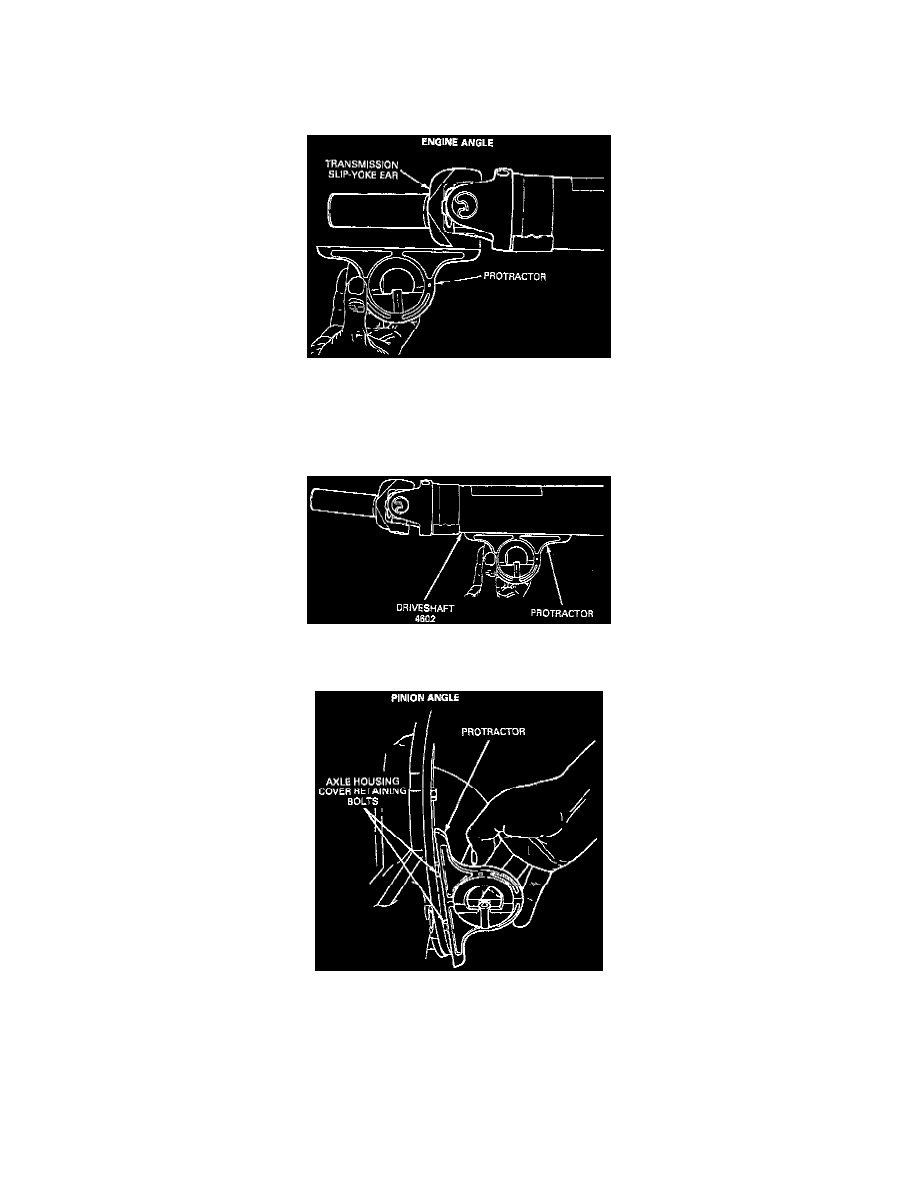F 350 4WD Pickup V8-351 5.8L VIN H EFI (1997)

9. To check the engine angle, rotate the driveshaft until one transmission slip-yoke ear is parallel to the floor. Place the protractor so it is flush
against the slip-yoke ear.
NOTE: If slip-yoke ears are not machined, rest the protractor against bottom of starter motor.
10. Make sure the protractor is not resting against any portion of the driveshaft. Record the angle reading. If the engine angle reading differs from the
specified angle by 1 degree or more, proceed to Engine Angle Adjustments and normalize the engine and transmission mounts. With the engine
angle at specifications, check the driveshaft and pinion angles.
11. To check the driveshaft angle, place the protractor on any portion of the driveshaft tube so the plane surface of the protractor is flush against the
bottom surface of the tube and parallel to the floor.
12. Record the reading. Subtract frame angle to get driveshaft angle. Check the pinion angle and if both or either reading is not to specifications,
adjust as necessary.
13. To check the pinion angle, place the protractor in a vertical position so it is flush against two axle housing cover retaining bolts. Rotate the
protractor bubble indicator so the 90-degree marks align with the indexing marks. Read the protractor and calculate angle. For example, if the
protractor indicates a reading of 85 degrees, the pinion angle reading is +/-5 degrees. Record the reading. If the reading is not to specification,
adjust as necessary.
14. Road test to verify resolution of condition. If driveline angle correction and driveline runout/balance procedures do not eliminate the vibration
condition, the differential ring gear and pinion should be checked for backlash variation.
